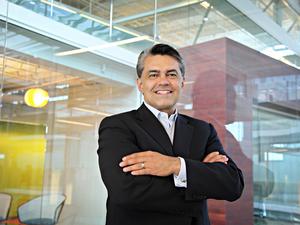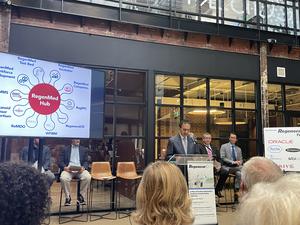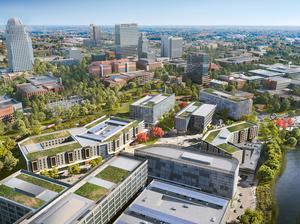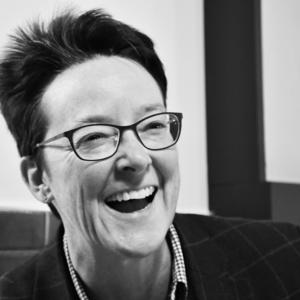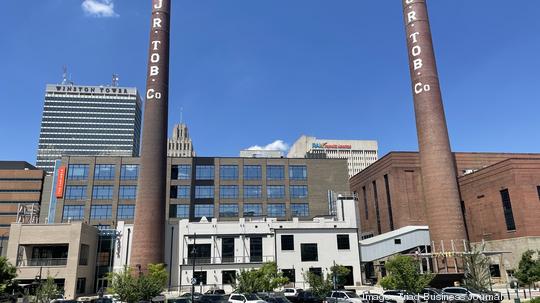
Nearly a century and a half ago, the R.J. Reynolds Tobacco Company was founded in Winston-Salem, making the Triad’s second-largest city one of the de facto tobacco capitals in the country.
However, in the present day, tobacco has taken a backseat as a significant economic driver in the Triad, and medical and technological innovation looks to take its place.
Quite literally taking its place, with the Innovation Quarter’s 2.1-million-square-foot district occupying former R.J Reynolds Tobacco Co. buildings. Graydon Pleasants, head of real estate development with Innovation Quarter, said IQ is dedicated to “creating an environment that maximizes the opportunity for inclusion, creativity, entrepreneurship and innovation.”
Innovation Quarter is home to over 90 companies, five academic institutions and 3,600 workers.
“One of the lessons of this innovation district concept is the concept of collisions either planned or just by chance,” Pleasants said. “That if people are in an environment that’s creative and inspirational and inclusive, they will run into one another, ideas bubble up and opportunities happen and business gets started.”
Brian Platz, co-founder and CEO of Fluree, agreed, saying the proximity to other companies working in similar or aligning fields have lead to partnerships.
“We have forged partnerships while we’ve been [at Innovation Quarter] that are probably only because we’re here,” Platz said. “We’ll probably have other partnerships. We’ve met and networked with so many different people that has ultimately led to different opportunities for us.”
Fluree, a Winston-Salem-based secure data management company, has been a tenant at Innovation Quarter since 2016. First at the Flywheel, and in the Bailey Power Plant for the past three years.
Platz said also said the flexibility offered in lease contracts at IQ makes it a competitive option for startups who may not be able to plan years ahead when most tenants require several-year lease agreements. Longer leases end up being a liability for smaller, budding companies and take away from the work they could potentially be doing.
“As a growing technology company, one of the biggest challenges you face is traditional leases of five years, sometimes seven years,” Platz said. “You’re usually trying to figure out what you’re going to be in six months from now, not five years from now.”
Platz said Fluree has worked with year-long lease agreements at Innovation Quarter and if possible, could negotiate a shorter time. This accommodation by Innovation Quarter, along with the presence of restaurants, entertainment and leisure activities and apartments, are examples of the dedication IQ has to the community. A community Platz says has a great sense of camaraderie.
“In the larger metropolitan areas, people will help each other just because they’re friends or they’re in the exact same space,” Platz said. “Here, I think everyone’s rooting for the community to grow and thrive.”
Although there is this importance placed on community, Platz said Innovation Quarter does have its downsides.
“Access to transportation, I think, is one of the big hindrances. But it’s more a reflection of the city than it is of Innovation Quarter,” Platz said.
Another challenge is the size of the campus. A question many companies ask themselves is when they have outgrown their current space, is do they have a landing place to accommodate that growth.
Pleasants said the initial capacity of Innovation Quarter has been most exhausted. As a result, last month, a master plan was unveiled to add another 1 million square feet of new office, clinical and lab space, as well as 15 acres of urban space.
“We are in the process of doing infrastructure planning and will begin infrastructure construction in the first quarter of next year,” Pleasants said.
With Wake Forest University being integral to the creation of the Innovation Quarter, Pleasants said there is continued importance placed on education to engender broader community engagement.
“The diversity that you accomplish via education, via training, via socialization is such a powerful element in terms of creating innovation, opportunity and entrepreneurship,” Pleasants said. “We know that education really ties back to this innovation district philosophy.”
Five academic institutions are represented at Innovation Quarter: the Wake Forest School of Medicine, Wake Downtown, Winston-Salem State University, Forsyth Technical Community College and Center for Design Innovation.
The Wake Forest Center for Healthcare Innovation is one of the School of Medicine departments at IQ. Eric Kirkendall, its deputy director, said that community investment and involvement are what caught his eye since arriving in 2018.
An additional Wake Forest facility could be located within the Innovation Quarter – an eye institute, which was a noteworthy element of the $3.4 billion investment from Atrium to Wake Forest.
Another element of the Wake Forest-Atrium partnership is the establishment of a second medical school campus in Charlotte. The medical school campuses in both Winston-Salem and Charlotte will create a new “regional corridor for health technology and innovation,” Kirkendall said, with the “corridor” creating a stronger “family.”
“We’re not packing up shop in Winston-Salem and moving any of the innovation stuff down to Charlotte,” Kirkendall said. “We’re sort of cross-pollinating, bringing the best ideas from Charlotte up to Winston-Salem and taking some of our ideas from Winston-Salem and moving them down.”
